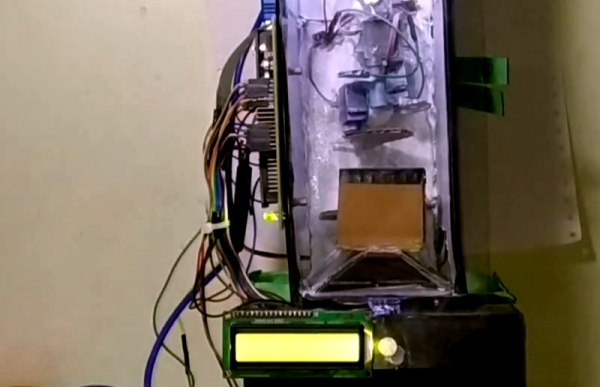Summary of RESISTORS SORTER MEASURES VALUES
The article describes a project by Ishann that automates sorting resistors by directly measuring their resistance using a voltage divider, avoiding machine vision. The device uses a funnel to feed resistors one at a time into a test area where their value is measured. A rotating plate then directs the resistor to either a left or right chute based on its value. This simple Arduino-powered setup includes an LCD screen and demonstrates practical use of servos and gravity for material handling, allowing precise resistor selection for circuits.
Parts used in the Resistors Sorter Project:
- Resistors (for measurement)
- Voltage divider circuit components
- Arduino microcontroller
- LCD screen
- Servos (for rotating plate)
- Funnel (for feeding resistors)
- Rotating plate
- Chutes for sorted resistors
- Power supply
We’ve all been there. A big bag of resistors all mixed up. Maybe you bought them cheap. Maybe your neatly organized drawers spilled. Of course, you can excruciatingly read the color codes one by one. Or use a meter. But either way, it is a tedious job. [Ishann’s] solution was to build an automatic sorter that directly measures the value using a voltage divider, rather than rely on machine vision as is often the case in these projects. That means it could be modified to do matching for precise circuits (e.g., sort out resistors all marked 1K that are more than a half-percent away from one nominal value).

There is a funnel that admits one resistor at a time into a test area where it is measured. A plate at the bottom rotates depending on the measured value. In the current implementation, the resistor either falls to the left or the right. It wouldn’t be hard to make a rotating tray with compartments for different values of resistance. It looks like you have to feed the machine one resistor at a time, and automating that sounds like a trick considering how jumbled loose axial components can be. Still, its a fun project that you probably have all the parts to make.
An Arduino powers the thing. An LCD screen and display control the action. If you want some practice handling material robotically, this is a great use of servos and gravity and it does serve a practical purpose.
We have seen many variations on this, including ones that read the color code. If you ever wanted to know where the color code for resistors came from, we took a trip to the past to find out earlier this year.
Source: RESISTORS SORTER MEASURES VALUES
